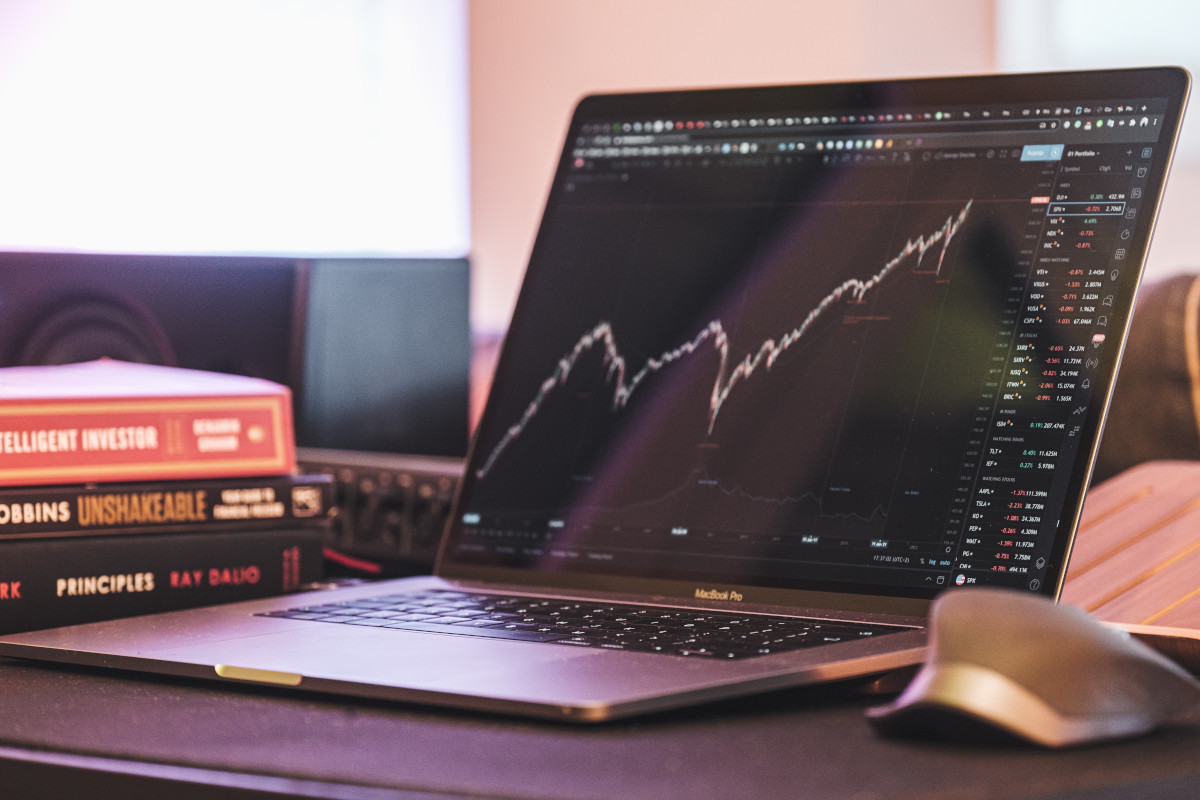Knowing how to pick a stock to day trade – that perfect gem that will surge in value over the course of a few minutes or hours rather than months or years – is a skill that can set you on the path to financial success.
So, how does one navigate this high-stakes, high-reward world? How do you sift through thousands of stocks to find those poised to make significant moves within a single trading day? How do you identify the best day trading stocks amid the sea of choices?
This guide will help you gain clarity on how to find stocks to day trade on a consistent basis, ensuring you’re setting yourself up for success with the best opportunities on any given day.
We’ll look at the traditional approach to finding the best stocks to day trade along with a simpler, more intuitive approach with VectorVest: the best stock analysis app for beginners and experts alike. But first, let’s set the stage by talking about what you should look for in the “best day trade stocks” and defining this strategy itself.
A Brief Introduction to Day Trading
First things first – what is day trading, and why should you try it instead of swing trading strategies, trend trading, position trading, scalping, and all your other options?
What is Day Trading?
Day traders seek to capitalize on small price movements in highly liquid stocks or other securities like forex or futures. It’s a game of seconds and minutes, not days and weeks, and as such, requires an entirely different approach than traditional investing.
While traditional investors tend to take a “buy and hold” approach, waiting for long-term price appreciation, day traders thrive in the minute-by-minute fluctuation of the market.
They make numerous trades each day, closing out positions before the market bell rings, hoping to make profits from short-term price movements.
The objective is to end the day with a net gain, after accounting for commissions and other trading-related expenses.
The Potential Risks and Rewards of Day Trading
Day trading can be highly profitable, but it’s also fraught with risk. The possibility of earning substantial profits in a short time can be alluring. Successful day traders can often earn several times their initial investment in a single day.
However, in comparing day trading vs swing trading, you’ll spend much more time in front of your screen. The strategy also can be a bit more stressful than others. That’s because your margin for error is so much lower, and being a few seconds late can be the difference between profits and losses.
Fortunately, much of this stress and risk can be offset with the proper strategy and the right tools. That being said, let’s get into what you came here for: tips on how find stocks to day trade. In order to do that, we need to define what the “best stocks to day trade” are.
What to Look for in the Best Day Trading Stocks
As a day trader, your primary focus should be on stocks that present the best opportunities for quick, short-term profits. This is no different than looking for the best stocks to swing trade.
But what exactly does that mean? What should you look for in the best stocks to day trade? Three things: liquidity, volume, and trend.
Ample Liquidity
Liquidity is the ability to buy or sell a security without causing a significant change in its price. A highly liquid stock has enough volume (the number of shares traded) that you can enter and exit your positions quickly and with minimal slippage – the difference between the expected price of a trade and the actual price.
Day trading relies heavily on the ability to make quick transactions, often in large quantities. If a stock isn’t liquid enough, you might struggle to sell your shares when you want to exit the position, causing a delay that could potentially turn a profitable trade into a losing one.
You can measure liquidity by looking at a stock’s daily trading volume. A high trading volume means the stock is actively traded, which often results in tighter bid-ask spreads, making it easier for you to execute your trades at your desired price levels.
Mid to High Volatility
Volatility refers to the degree of variation in a stock’s price over time. In simpler terms, it’s how much a stock’s price goes up and down for a set of returns. Day traders thrive on volatility. The more a stock price fluctuates within a day, the more opportunities there are for a day trader to make a profit.
But there’s a caveat. While high volatility can mean more opportunities, it also brings higher risk. Stocks with extreme volatility can move quickly against you, leading to substantial losses. Therefore, it’s essential to manage risk and avoid putting too much capital into a single, highly volatile stock.
Positive Price Trend
When day trading, you want to spot stocks that are on the move, not those that are stagnant or moving sideways. Stocks with a positive price trend – where the price is consistently moving upward – can provide excellent day trading opportunities.
You can identify these trends by using technical analysis tools like moving averages, which smooth out price data to help identify the stock’s trend direction over a specific period. If the stock’s price is above its moving average, it may indicate a positive price trend.
However, keep in mind that trends can reverse quickly, especially in volatile markets. Always be prepared to adjust your strategy based on the stock’s price movements.
As we said earlier, this is the thrill (and risk) of day trading – the margin for error is so small. That’s why we’re going to set you up for success below with advice on how to pick a stock to day trade.
How to Find Stocks to Day Trade: Advice to Pick the Best Stocks for Day Trading
Finding the best day trading stocks involves a series of steps that not only pinpoint potential winners but also align with your trading strategy and risk tolerance. So, here’s some advice on how to find stocks to day trade.
Before You Start Looking for the Best Stocks to Day Trade, Make Sure the Market Itself is Optimal
It’s crucial to remember that the overall market sentiment can significantly influence individual stock performance. Day trading is not an isolated activity; it’s interconnected with broader market trends and movements. Before you dive into your search for the best stocks to day trade, it’s smart to first take a pulse check of the overall market.
You can monitor the health of the market using VectorVest’s stock market sentiment indicator. This tool helps you gauge the market’s overall direction and strength, providing a clear and accurate picture of current conditions.
By starting your trading day with a quick glance at VectorVest’s indicator, you’ll know whether the market is trending up or down, and if it’s a strong or weak trend. This insight can guide you in your selection of stocks and help you anticipate potential market movements.
Stay Up to Date With the News to Find Opportunities
Day trading is heavily influenced by current events. Everything from earnings announcements and economic reports to geopolitical events and industry trends can cause a stock’s price to move. As a day trader, you need to stay plugged into these news sources to identify potential trading opportunities.
Regularly follow reliable financial news outlets, subscribe to relevant newsletters, and consider setting up alerts for stocks in your watchlist.
Remember, news doesn’t always result in predictable market movements, so it’s crucial to combine news-based trading with technical and fundamental analysis to make more informed decisions. Sometimes, a company will fall on good earnings for no apparent reason – this goes back to investor sentiment.
So, news should be taken with a grain of salt – you can use it as your first step to uncovering the best day trading stocks, and then confirm the opportunity through more robust stock analysis.
Fundamental and Technical Analysis: the Traditional Approach to Day Finding Day Trading Stocks
You can learn how to analyze a stock one of two ways: fundamental analysis or technical analysis.
Fundamental analysis involves evaluating a company’s intrinsic value by examining related economic and financial factors, including earnings, revenue, industry outlook, and overall economic conditions. Technical analysis, on the other hand, involves studying statistical trends gathered from trading activity, such as price movement and volume.
From a day trading standpoint, though, most of your work will focus on the technical side of things. You don’t care about the fundamentals of a company – you just need to find a little window of volatility you can capitalize on.
Many of the best indicators for swing trading can also be used to find the best day trading stocks – you’ll just use them slightly differently. These include moving averages and other momentum indicators, like the RSI or bollinger bands. The goal is to identify a trend and determine if there is room for you to capitalize on it. Here’s how you can do that:
- Trend Analysis: Day traders often look for stocks exhibiting consistent trends over short periods. Tools like moving averages and trend lines can help identify these trends. A moving average smoothens out price data to help traders better identify the trend direction. For instance, a 20-day moving average plots the average price over the past 20 days. On the other hand, trend lines, drawn over pivot highs or under pivot lows, can show the prevailing direction of price, acting as signals for entry and exit points.
- Volume Analysis: Volume, reflecting market activity and liquidity, is critical for day trading. Volume helps confirm trends and chart patterns. For example, a sudden spike in volume could signal a stronger trend and serve as a signal for trade entry or exit.
- Momentum Indicators: Momentum indicators like the Relative Strength Index (RSI) or the Moving Average Convergence Divergence (MACD) can help traders identify overbought or oversold conditions. They signal when a trend is about to reverse, offering valuable insights for day traders aiming to profit from short-term price fluctuations.
Using these elements of technical analysis, day traders can systematically identify the best stocks to day trade. However, sifting through the abundance of stocks using these methods can be time-consuming and overwhelming. This is where VectorVest becomes invaluable.
Finding the Best Stocks to Day Trade Can Be So Much Easier: Look for Stocks With an Existing Uptrend Using VectorVest’s RT Rating!
Traditional methods of stock picking, while reliable, can be time-consuming and complex, especially for beginners. This is where VectorVest’s stocks software comes into play.
While our solution is known as the best swing trading platform, it can be used to help you uncover the best day trade stocks, too!
The system integrates both fundamental and technical analysis, presenting it in an easy-to-understand manner that allows you to make swift, informed decisions. As a result, you’re given clear, actionable insights at a glance. You’re literally told what to buy – and when to buy and sell it!.
One of the key metrics VectorVest offers is the RT Rating. RT stands for “Relative Timing”, and it indicates the strength and direction of a stock’s price trend. A score above 1.0 signifies an uptrend, while a score below 1.0 indicates a downtrend.
With this rating, you can find stocks that not only are in an existing uptrend but also have the momentum to maintain it. This feature reduces the complexities of trend analysis, making it a straightforward process even for beginners.
Better Yet, Find Winning Opportunities on Autopilot With Our Stock Screeners!
The reason VectorVest is considered the best stock analysis app is because of the vast possibilities it has to offer. While the RT rating can streamline the process of identifying trending stocks, our stock screener takes it a step further. VectorVest’s stock screener automates the entire process, saving you valuable time and effort.
You can choose your criteria, too. Maybe you want to find stocks to day trade in a specific industry like steel, retail, petroleum, crypto, or some other industry. Or, perhaps you just want to find stocks with the most momentum.
Whatever the case, you can find them on autopilot day in, day out. Then, once you’ve found the best day trade stocks, it’s just a matter of executing the trade…
After Finding the Best Day Trading Stocks, Follow These Tips to Manage Your Position
Learning how to find stocks to day trade is step one. The next step is to manage your position effectively. Here’s where VectorVest can be a true ally in your trading endeavors.
Defining Your Trading Strategy: Setting Up Entry and Exit Points
In day trading, timing is everything. Entry and exit points define your potential profits and losses. VectorVest’s advanced charting tools and real-time data offer a clear view of price patterns and technical indicators, helping you identify optimal entry and exit points.
This is something you can learn more about in our guides on when to buy stocks and when to sell stocks. But, once you find your entry/exit, our advice is to leverage technology to remove yourself from the process of closing ou the position.
Importance of Risk Management: The Use of Stop-Loss and Take-Profit Orders
No trading strategy is complete without robust risk management, and that’s where trading stops come in.
A stop-loss order helps limit potential losses by automatically selling a stock when it falls to a certain price. Conversely, a take-profit order locks in profits by selling a stock when it reaches a certain price.
VectorVest’s stop prices can help you protect your position from dramatic losses, helping you cut losses should the trade not work out. While your goal is always to win a trade, it’s important to realize you will face losses. It’s hard to remain emotionless when this happens and cut ties before a loser turns into a bigger loser.
The same is true of taking profits. It’s reasonable to want to squeeze the fruit for all its juice, getting out every last basis point of profit. But, the last thing you want is to watch a winner turn into a loser. That’s why we encourage you to use ProfitLockerPro.
Emotion and Trading: How to Keep Your Feelings in Check
Day trading can be a rollercoaster of emotions, and letting those emotions drive your trading decisions can be detrimental. That’s why you should remove yourself form the equation and leave the position management to algorithms that don’t have any emotion. That’s where ProfitLockerPro comes in.
This user-friendly tool provides clear guidance on when to offload a stock, enabling you to secure profits or mitigate losses. It removes emotional bias, uncertainty, and regret from the equation, leading you towards consistent, robust returns.
Closing Thoughts on How to Pick a Stock to Day Trade
Learning how to pick a stock to day trade can seem daunting, but it doesn’t have to be. By understanding key aspects like liquidity, volatility, and price trends, you can identify promising stocks for day trading. And, at this point, it’s time to bring our conversation on how to find stocks to day trade to a close.
If you want to learn more about trading the stock market, explore our blog. You can learn about how to buy the dip, the best trading strategies for small accounts, what happens to the stock market during a recession, and more.
Otherwise, we encourage you to practice the principles we’ve shared to day with paper trading. Once you feel confident in your ability to consistently uncover the best day trading stocks, along with your ability to execute the trade, give it a chance in the real world.
With VectorVest, the path to smarter, more successful trading is just a few clicks away. Get set up with the stock advisory today or get a free stock analysis to discover what’s possible!








Leave A Comment